Abstract
Yotis, William (Loyola University, Hines, Ill.), and Ronald Stanke. Bacteriostatic action of progesterone on staphylococci and other microorganisms. J. Bacteriol. 92:1285–1289. 1966.—Progesterone has been examined in vitro for antibacterial activity against 10 microorganisms. Turbidimetric and manometric techniques were used to assay the antibacterial activity of progesterone. The organisms tested consisted of Staphylococcus aureus, S. epidermidis, Gaffkya tetragena, Bacillus subtilis, Listeria monocytogenes, Candida albicans, Escherichia coli, Aerobacter aerogenes, Salmonella paratyphi, and Proteus vulgaris. Antibacterial action was shown by progesterone only against the gram-positive microorganisms when they were grown in tryptic soy broth containing 10 to 20 μg of progesterone per ml. Pregnenolone, 4-pregnen-20β-ol-3-one, and 5α-pregnane also possessed antistaphylococcal properties, whereas pregnanolone, pregnandione, 11α-hydroxyprogesterone, and 17α-hydroxyprogesterone did not. The bacteriostatic action of progesterone on staphylococci was exerted primarily during the first 8 hr of incubation, and it was reduced in the presence of oxygen. In the presence of 20 μg of progesterone per ml, there was significant reduction in the oxidation by resting staphylococcal suspensions or utilization by staphylococci of pyruvate as an energy source during growth.
Full text
PDF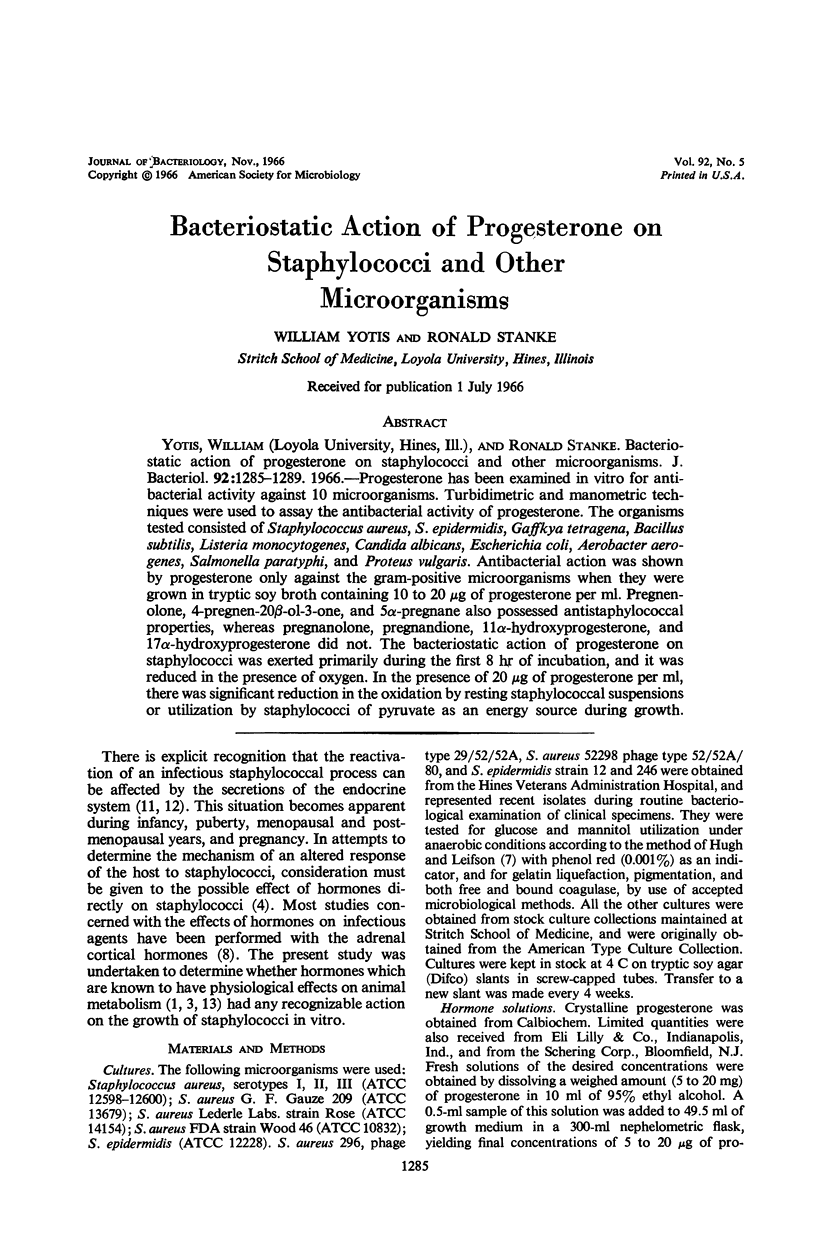
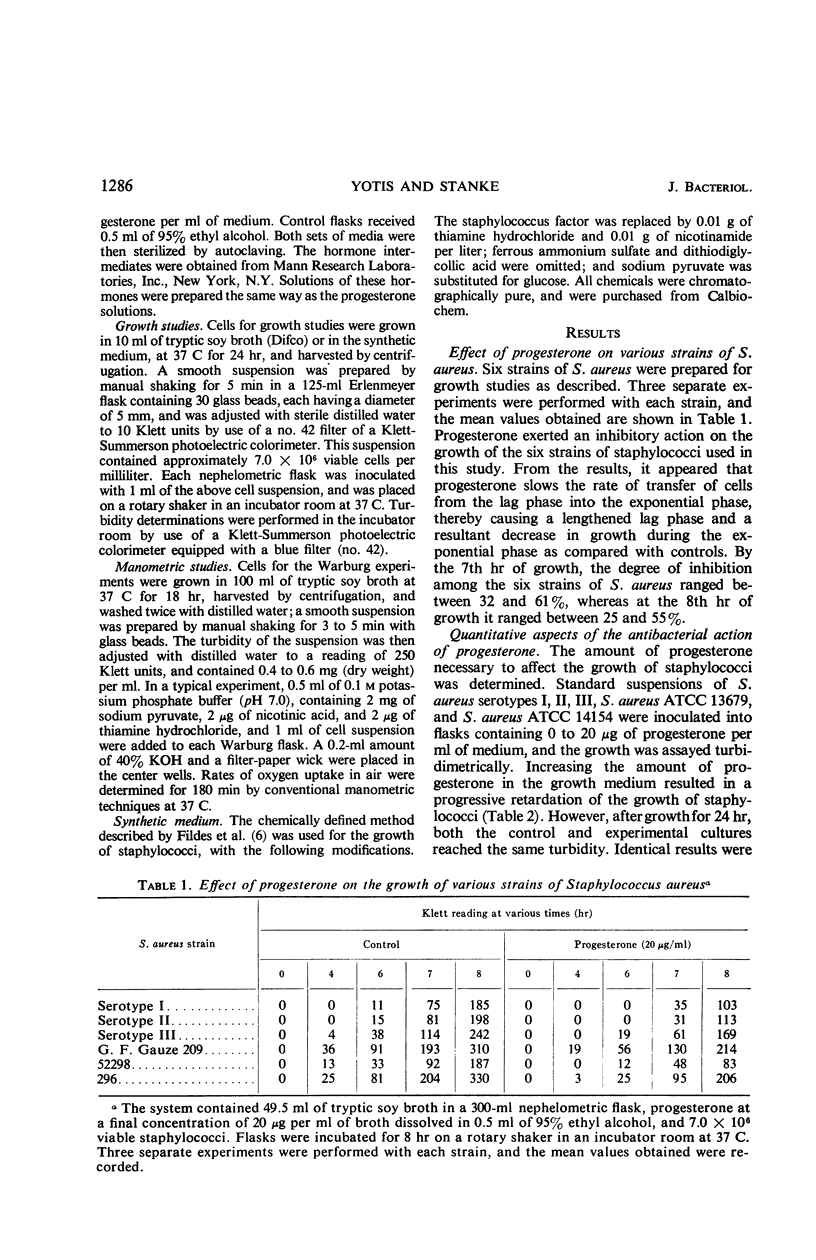
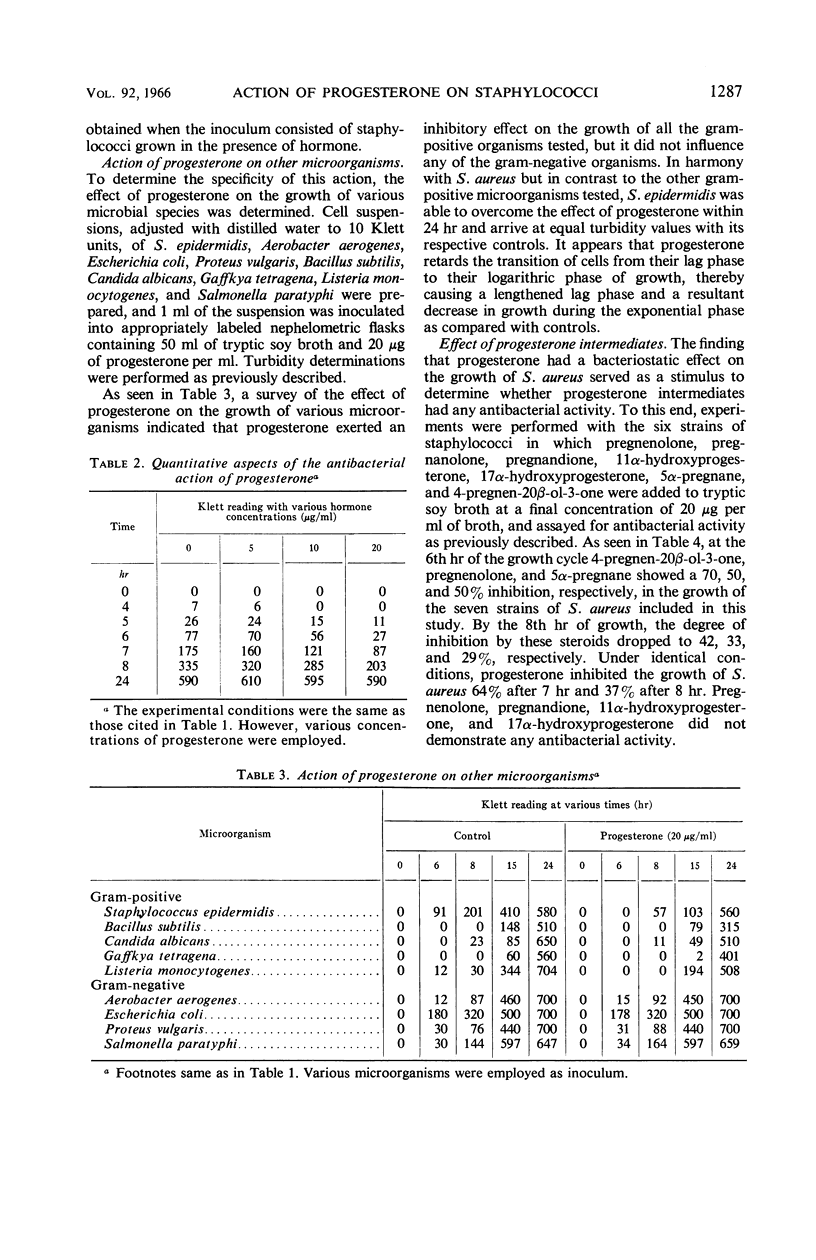
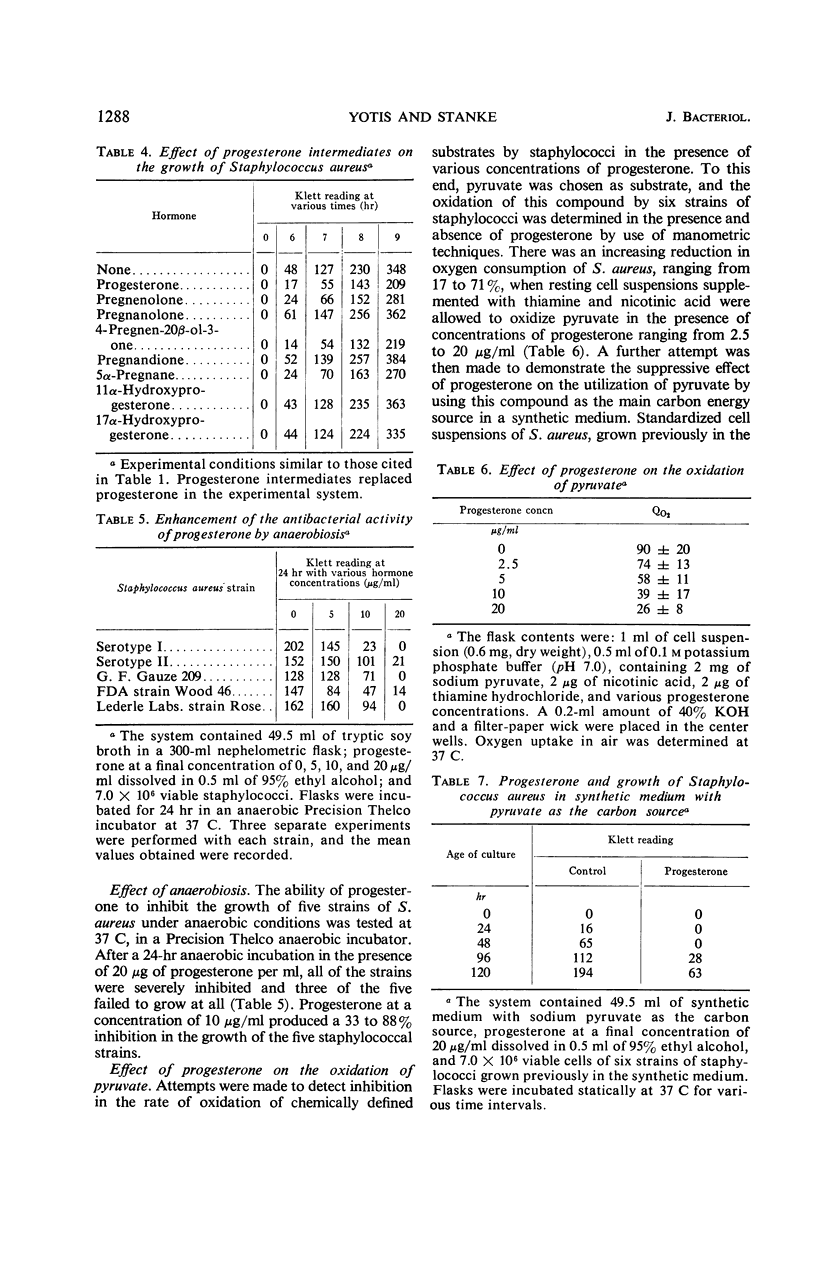
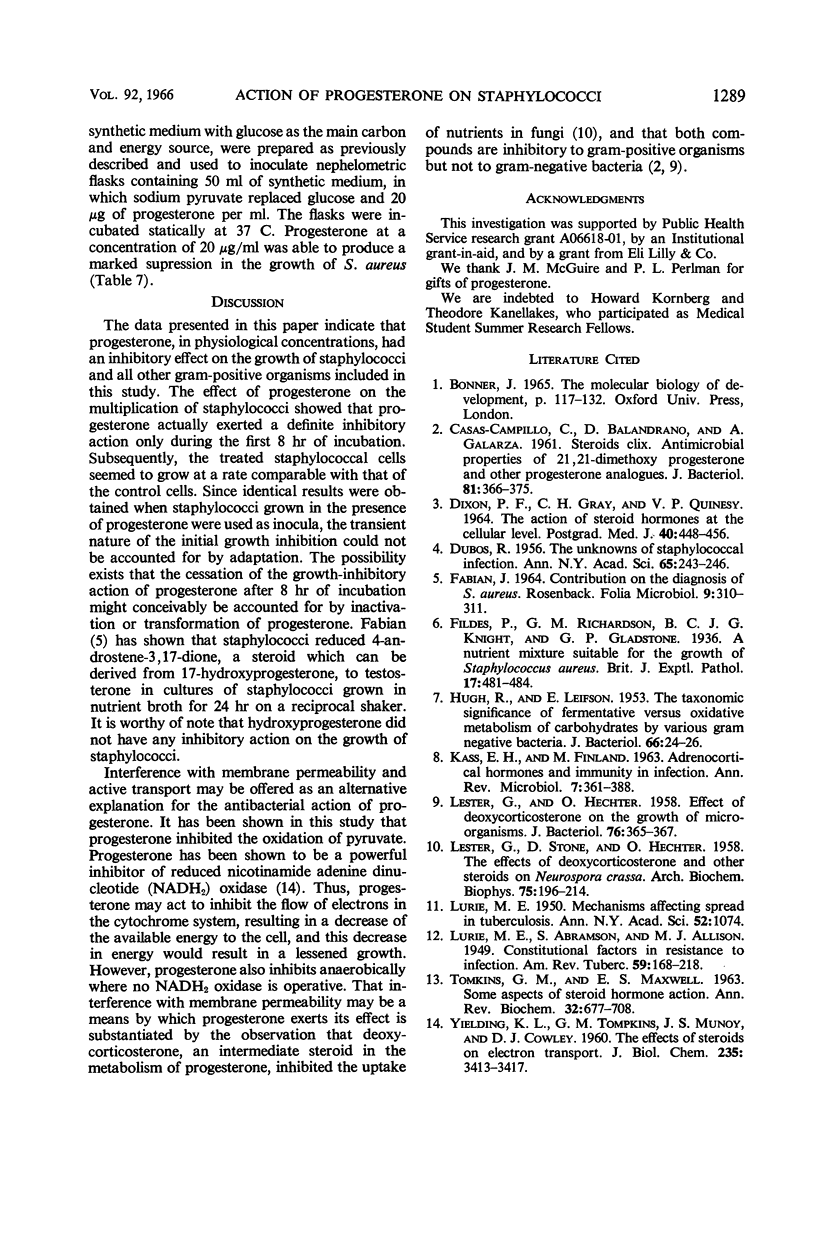
Selected References
These references are in PubMed. This may not be the complete list of references from this article.
- CASAS-CAMPILLO C., BALANDRANO D., GALARZA A. Steroids. 159. Antimicrobial properties of 21,21-dimethoxy progesterone and other progesterone analogues. J Bacteriol. 1961 Mar;81:366–375. doi: 10.1128/jb.81.3.366-375.1961. [DOI] [PMC free article] [PubMed] [Google Scholar]
- DIXON P. F., GRAY C. H., QUINCEY R. V. THE ACTION OF STEROID HORMONES AT THE CELLULAR LEVEL. Postgrad Med J. 1964 Aug;40:448–456. doi: 10.1136/pgmj.40.466.448. [DOI] [PMC free article] [PubMed] [Google Scholar]
- DUBOS R. The unknowns of staphylococcal infection. Ann N Y Acad Sci. 1956 Aug 31;65(3):243–246. doi: 10.1111/j.1749-6632.1956.tb36642.x. [DOI] [PubMed] [Google Scholar]
- FABIAN J. CONTRIBUTION ON THE DIAGNOSIS OF STAPHYLOCOCCUS AUREUS ROSENBACH. Folia Microbiol (Praha) 1964 Sep;50:310–311. doi: 10.1007/BF02873311. [DOI] [PubMed] [Google Scholar]
- HUGH R., LEIFSON E. The taxonomic significance of fermentative versus oxidative metabolism of carbohydrates by various gram negative bacteria. J Bacteriol. 1953 Jul;66(1):24–26. doi: 10.1128/jb.66.1.24-26.1953. [DOI] [PMC free article] [PubMed] [Google Scholar]
- KASS E. H., FINLAND M. Adrenocortical hormones in infection and immunity. Annu Rev Microbiol. 1953;7:361–388. doi: 10.1146/annurev.mi.07.100153.002045. [DOI] [PubMed] [Google Scholar]
- LESTER G., HECHTER O. Effect of deoxycorticosterone on the growth of microorganisms. J Bacteriol. 1958 Oct;76(4):365–367. doi: 10.1128/jb.76.4.365-367.1958. [DOI] [PMC free article] [PubMed] [Google Scholar]
- LESTER G., STONE D., HECHTER O. The effects of deoxycorticosterone and other steroids on Neurospora crassa. Arch Biochem Biophys. 1958 May;75(1):196–214. doi: 10.1016/0003-9861(58)90410-7. [DOI] [PubMed] [Google Scholar]
- LURIE M. B. Mechanisms affecting spread in tuberculosis. Ann N Y Acad Sci. 1950 May 31;52(7):1074–1090. doi: 10.1111/j.1749-6632.1950.tb54008.x. [DOI] [PubMed] [Google Scholar]
- TOMKINS G. M., MAXWELL E. S. SOME ASPECTS OF STEROID HORMONE ACTION. Annu Rev Biochem. 1963;32:677–708. doi: 10.1146/annurev.bi.32.070163.003333. [DOI] [PubMed] [Google Scholar]
- YIELDING K. L., TOMKINS G. M., MUNDAY J. S., COWLEY I. J. The effect of steroids on electroids on electron transport. J Biol Chem. 1960 Dec;235:3413–3416. [PubMed] [Google Scholar]


